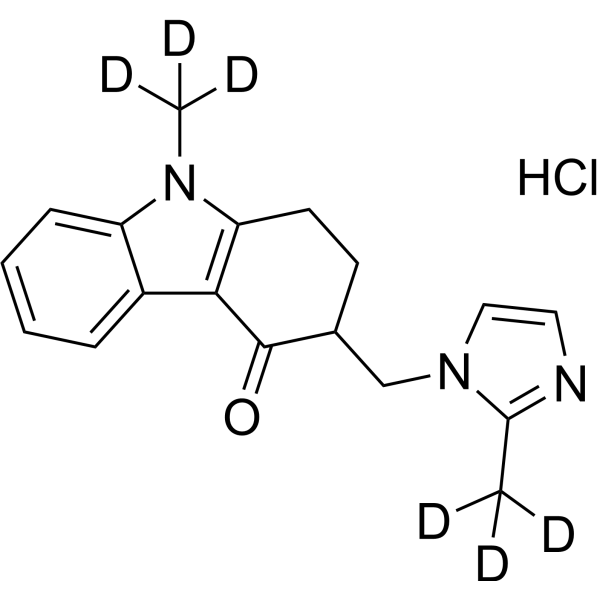1225442-22-7
| Name | Ondansetron-d6 hydrochloride |
|---|
| Description | Ondansetron-d6 (hydrochloride) is the deuterium labeled Ondansetron hydrochloride[1]. Ondansetron hydrochloride is a serotonin 5-HT3 receptor antagonist used mainly as anantiemetic (to treat nausea and vomiting), often following chemotherapy[2][3][4][5][6][7]. |
|---|---|
| Related Catalog | |
| In Vitro | Stable heavy isotopes of hydrogen, carbon, and other elements have been incorporated into drug molecules, largely as tracers for quantitation during the drug development process. Deuteration has gained attention because of its potential to affect the pharmacokinetic and metabolic profiles of drugs[1]. |
| References |
| Molecular Formula | C18H14D6ClN3O |
|---|---|
| Molecular Weight | 335.86 |
